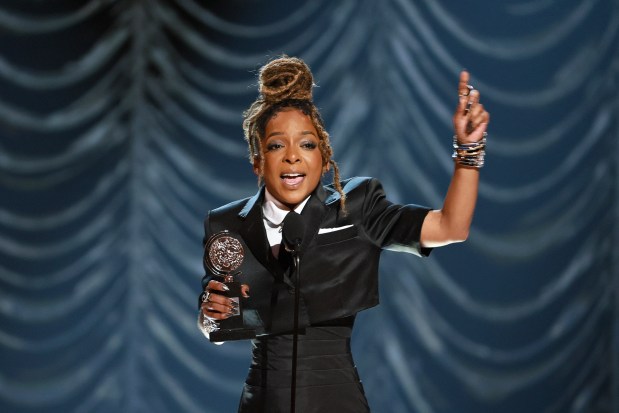The Chicago Bulls have been left behind at the 3-point arc. Not just by an inch. By a mile.
That was brutally clear Thursday night in Detroit. The Bulls racked up 14 3-pointers in a 127-105 blowout of the Pistons. In the process, they broke the single-season franchise record for 3s, set in 2017-18. Yet that historic number — 919 entering Friday’s road game against the Washington Wizards — also is the third-lowest 3-point total in the NBA.
It’s hard to fully illustrate the chasm between the Bulls and the rest of the league from behind the arc. But let’s try.
The Bulls have made nearly 400 fewer baskets than the Boston Celtics, who rank first with 1,305 3-pointers. The Golden State Warriors’ Stephen Curry has single-handedly totaled more than one-third (345) of the Bulls’ 3-pointers. The Bulls have only one player in the top 50 players in 3-point production — Coby White, 205, 18th.
These are all old, tired, repetitive questions. But at the end of another sub-.500 season, they have to be asked. Why won’t the Bulls invest in 3-point shooting? And what will it take for the front office to give into the reality of the modern NBA?
The prevalence of the 3-point shot in the NBA has become a commonly understood reality. The Warriors broke the league record with 1,363 made 3s last season. The 25 largest regular-season 3-point totals in NBA history have occurred in the last six seasons.
The Athletic’s Mike Prada detailed this shift in his book “Spaced Out,” which documented the irrevocable change in 3-point shooting that occurred in the 2010s. In the 2012-13 season, NBA teams averaged 20 3-point attempts per game — a new high for the league that seemed almost unimaginable at the time. The average rose by 4.1 attempts per game in the 2015-16 season and skyrocketed to 35 by the 2011-12 season.
What exactly happened? How did teams shift to take 15 more attempts from behind the arc per game in less than a decade?
The simple reasoning is that three points are more than two. A more detailed explanation balances rule changes such as hand-checking with the increased impact of data and analytics on in-game strategy. Some might blame Curry. Others can blame the “pace and space” revolution the Phoenix Suns ushered in and the “random” playmaking of Jeff Van Gundy and the Houston Rockets. (If you want an in-depth exploration of the topic, check out Prada’s book.)
Warriors guard Stephen Curry warms up before a game against the Lakers on Jan. 27, 2024, in San Francisco. (Nic Coury/AP)
But the reality is simple. Success in the NBA is defined by teams that can shoot the ball from behind the arc. This shift has fundamentally redefined the game and the state of the NBA as a whole. And the Bulls have never made a consistent effort to keep up.
When this began, the Bulls were a fairly standard 3-point-shooting team. They finished 15th in 3-point volume in the 2010-11 season with 511. Four years later, they finished in the exact same spot with 645 3s.
From that point, the Bulls have fluctuated from middling to bottom tier in the category. But since executive vice president Artūras Karnišovas took over in 2021, the Bulls have been a bottom-three team in 3-point shooting, finishing last in attempts and makes last season.
It’s clear, of course, that the team’s 3-point volume likely would have been higher had Lonzo Ball, Zach LaVine and Patrick Williams — three of the team’s top 3-point shooters — hadn’t missed such sprawling swaths of the past three seasons with injuries. And there’s a reasonable case to be made for the visible development of Ayo Dosunmu and Coby White from behind the arc. But that still doesn’t explain the front office’s refusal to adapt the roster to adjust with the time and keep pace with scoring.
This isn’t a rarity for Karnišovas-run projects. The Denver Nuggets — with whom Karnišovas was assistant general manager for seven years — have been a rare exception to this trend, winning the championship last year despite being 18th in the league in 3-point volume. But they break that mold through exceptionalism — namely the inimitable presence of Nikola Jokić, who breaks apart opposing defenses through his persistent interior shooting and baffling passing vision.
The Bulls, in comparison, are not exceptional at anything. They rank among the bottom third in scoring, assists and defensive rating and the bottom half in shooting efficiency, offensive rating and pace. And that’s the thing about finding success among trends such as the surge in 3-point shooting: You either establish exceptionalism or fall in line with the rest of the league.
We are now a full decade into the 3-point revolution. So what will it take for the Bulls to catch up?
Two consecutive losing seasons should be a start. The front office will face a necessary turning point in the offseason, either returning LaVine and Ball to the starting lineup or moving their contracts to start anew. But with Karnišovas and company continuing to prioritize players such as DeMar DeRozan and Nikola Vučević, the Bulls will remain mired in the lower-scoring status quo.
It’s clear that change is necessary for the Bulls to catch up with the league. And if Karnišovas can’t find the accelerant, the Bulls will have to look elsewhere for a solution.





